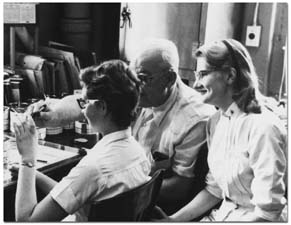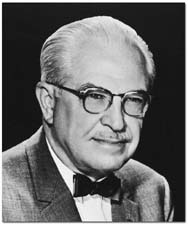![]()

William Brandes teaching medical technologists how to identify bacterial colonies (right) in the William Pepper Laboratory's Clinical Microbiology Laboratory, circa 1950s. Brandes' career here started in the late 1920s and spanned more than four decades. Originally hired to bleed sheep in the corral situated behind the 1895 building at 36th and Spruce Streets, he advanced to laboratory supervisor. This photo shows the laboratory when it was located on the 7th floor of the Hospital of the University of Pennsylvania's Maloney Building - site of the original William Pepper Laboratory. (Eastern Pennsylvania Branch, American Society for Microbiology)
Harry E. Morton, ScD, chief of the Microbiology Division of the William Pepper Laboratory, 1967-1975. A man of diverse interests, Morton pioneered electron micrographic studies on diphtheria, published a large volume of literature on mycoplasms and invented the stainless steel test tube caps still used today. In the Cold War environment, he and Paul F. Smith, MD, PhD, undertook government-sponsored classified research into biological toxins. Their work on brucella, labeled "Project Arabian Camel," explored the infectivity of the organism in man and animals. Under the rubric of the University's Institute for Cooperative Research, Morton also pursued research for the federal government on botulism. (American Society for Microbiology Archives)

